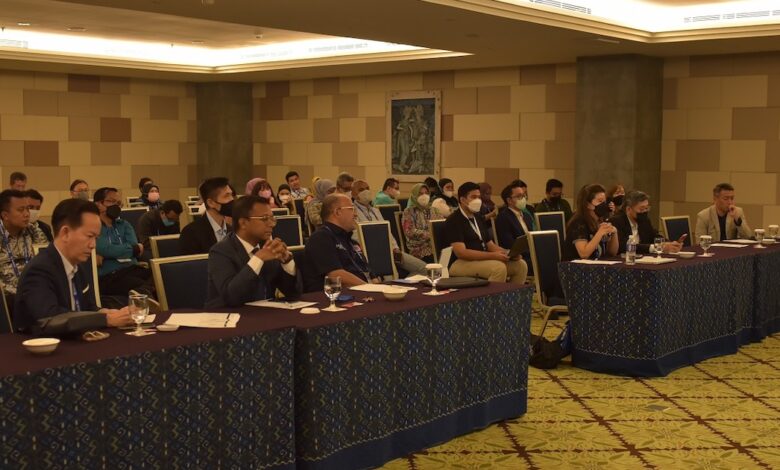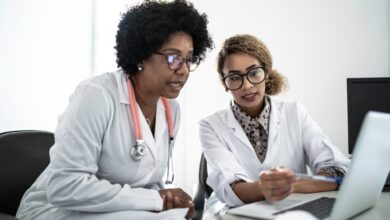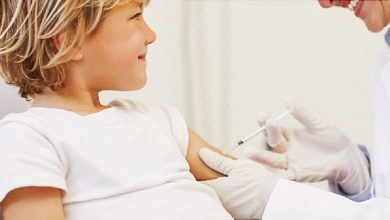Innovative telemedicine solutions introduced by startups in HIMSS22 APAC

Five APAC-based startups took to the stage in this year’s HIMSS22 APAC Conference in hopes of gaining even more traction for their businesses.
The Digital Innovation Expo, organized by Zoom and HIMSS, asks startups to provide solutions that leverage video or video conferencing.
Showcase winners will be recognized during the HIMSS APAC Awards Dinner along with the opportunity to have a 30-minute call with Brendan Ittelson, Zoom’s Chief Technology Officer.
The Showcase Review was a panel of six: Benjamin Lim, APAC Leader, ISV Platform Business Development, Zoom; Benedict Tan, Group Head of Digital Strategy, SingHealth; Dr. Tullawat Pacharapha, Executive Director, Vejthani Hospital; Jennie Kung, Senior Director, Mayo Clinic Innovation Exchange; Mohammad Adib Khumaidi, President, Indonesian Medical Association; and Dr. Dhesi Raja, Board Member, Digital Economy Group Malaysia.
The session was moderated by Bruce Steinberg, Executive Director and Head, HIMSS International.
Jignesh Bhuta, CEO of Smartfuture presented his startup’s patient app and doctor portal for the first time. He shared that once a patient has entered their details on the app and selected their symptoms, they will be taken to a page where they can select a device to be used to measure their symptoms. surname.
“We have integrated [around 400] Medical devices of various brands, obtained more than 31 vitals, including intermittent and continuous,” he added.
Once patients have recorded their vital information using video or image formats, the information is stored in both the patient app and the physician portal. The doctor can instantly see what the patient has recorded and conduct a video call with the patient. After the call, the doctor is taken to a module where they can prescribe medication, issue a medical certificate, or provide a referral to a specialist.
“We complete this journey with all of this being emailed to the patient… We hope to make the patient-doctor journey a little more convenient,” he concluded. .
Kung asked Bhuta to share the most common use case of the platform, and he replied that most recently it was a first responder.
“[We also see] manage many chronic cases, and these programs can last from three weeks to a year. Not only that, when we first started, the platform was actually a self-monitoring health kiosk with Bluetooth connected devices. Therefore, in terms of population health, we have participated in many public health projects and the comments will be useful in drafting many policies of the community and hospitals. “
AlteaCare’s integrated digital health platform

William Suryawan, CEO and Co-Founder of AlteaCare spoke about their platform to connect patients across Indonesia with healthcare professionals in hospitals. To explain how AlteaCare works, he used the case study of a patient named “Junita”.
Junita – who uses AlteaCare – consulted a Jayapura-based doctor about her condition via video call, but she was not satisfied with the treatment recommendations and wanted a second opinion from a doctor in the Indonesian capital Jakarta. She forwarded her lab results, which were saved on the platform, to that doctor for a consultation. Satisfied with the treatment and medication recommendations, she opted to purchase them and have them delivered to her home.
“And this is possible because AlteaCare is successfully integrated with electronic medical records in the hospital. So, after a remote poll, the patient can access the summary. medical records and pass their medical records on to any doctor they want a second opinion from,” he concluded.
Khumaidi wanted to find out how AlteaCare is different from other telemedicine apps.
“Since AlteaCare is integrated with the system, physicians do not need to enter information into the AlteaCare platform and can do so in their EMR or HIS. [It’s also an] improving the customer experience, if the patient wants to go to the hospital for an offline consultation after the consultation, all the data is in the hospital,” Suryawan explained.
DoctorTool’s Digital Ecosystem for Healthcare Providers

Rainaldo, CEO and Co-Founder of Doctor Tool explains that his health tech startup provides a digital ecosystem for healthcare providers and residents , citing their more than 230 customers spread across 24 provinces in Indonesia.
He demonstrated the product through a teleconference with a doctor, who could instantly view his medical history such as past diagnoses and prescriptions. During telemedicine, he also uses a blood pressure (BP) monitor – which is connected to the Physician Tool Center – which allows the doctor to see his BP readings. The doctor then provides him with a prescription, with the platform allowing him to choose a courier service or pick up his medication at a pharmacy.
“Doctor Tool Center can connect to many devices, many sensors. We can use it in medical facilities. With this type of telemedicine, doctors can diagnose and prescribe prescriptions more often. We have successfully implemented this technology to help doctors from Indonesian universities [provide care] for families with infants or young children in rural areas in Indonesia,” said Rainaldo.
Tan wanted to know how if the patient could see what the doctor typed during the consultation, and where the patient history came from.
“I can’t see it during the call, but after the conversation, I can see the profile,” explains Rainaldo. He added that the history the doctor refers to is from previous consultations on the app.
Kesia’s HIS with telemedicine

San Emirza, CFO of Kardia Group in Indonesia started his demo by saying that telemedicine is just a small feature of Kesia HIS.
“In the remote islands of Indonesia, we don’t really have many specialists – maybe just a large number of general practitioners. So, [in Kesia] we have a feature in EMR that allows GPs to consult professionals living in big cities like Jakarta,” he said.
Emirza explains that a patient can consult a general practitioner about his or her condition, but if the GP does not have the appropriate expertise – in the case of a patient with diabetes, for example – there is a You can initiate a three-way call with the therapist.
“[Additionally] As a rule, GPs are not allowed to prescribe certain medications – but specialists are allowed to prescribe them. General practitioners who live in the same area as the patient will then be able to dispense the medication to the patient,” he added.
Kung asked how they manage the process – for example, making sure the expert is available.
“So there are actually reservation systems,” explains Emirza. “And the therapist must have dedicated time to provide the service. Let’s say they have a physical service for four hours; they would need to allocate an hour for telemedicine.”
MFine’s Virtual Hospital

“It all started with chatbots,” said Prasad Kompalli, Co-Founder and CEO of MFine, who joined the Showcase via Zoom.
He explained that MFine’s chatbot collects important information about the patient’s condition even before the consultation.
“If someone says [they have a] fever, then we asked more questions about it. If someone says cough, we record the cough through the app – we’re processing the cardiovascular signal so we can judge if it’s an upper or lower respiratory tract infection. We are doing all of this to make decisions in advance even when the doctor is on the video call,” he explained.
With this information in hand, the doctor will then join the call to recommend the patient’s treatment plan. Three-way communication is also enabled in the event that a caregiver is involved in the scenario.
Kompalli added that by using the mobile phone’s camera, the app can also measure the patient’s vital indicators (e.g. heart rate, BP, SPO2, etc.). With these importance, diagnosis becomes more data-driven and physicians can diagnose at higher quality.
Dr. Pacharapha asked if MFine would interfere with any medical devices.
Kompalli replied, “We don’t directly interface with any hardware at the moment. In the future, we want to connect with other devices like Apple Watches.”
Lim asked Kompalli to share the algorithm the platform uses to distribute patients to doctors.
“There isn’t any algorithm in the sense that it’s based on the filters the patient has selected. There are filters around who is the nearest doctor, those available, as well as who you consulted last time. And in addition, some filters around what is the experience and the number of patients seen so far. We don’t do the matching. We actually provide this information, the patient decides. about the doctor they want to go to,” explains Kompalli.
The exhibition is over

Smartfuture emerges as the winner of the Digital Innovation Expo. Commenting on the win, Lim said, “Congrats to the finalists. It was a tough decision for the panel, but it depends on the scalability of the platform as well as its scope. device support has made a difference for Smartfuture.It is a privilege to be part of the jury, and Zoom is keen to partner with vendors to advance and bring telehealth to the industry. they. “
At the end of the Presentation, several judges shared tips and insights.
Expanding on her previous question around the operating procedure, Kung said: “How does that work from a tactical perspective? How do your clinicians really interface? The interface? If the user interface is not a vital part of building your product, it will fail because your demo is smooth and seamless, if it gets to the point of alarm. , that pop-up is appearing and it doesn’t fit the workflow and it [irritating] clinician, you will fail. Don’t wait until the last minute to start testing and take a look at that. “
Sharing his approach to digital innovation, Dr. Pacharapha explains: “When we think about digital transformation, we look for the benefit we get, right? I I don’t start with technology. I first define a need or use case, then I look at the technology needed to deliver that.”
Recalling Dr. Pacharapha’s view, Dr. Raja said: “The biggest problems in the world are the best business opportunities. So start loving the problems.”




